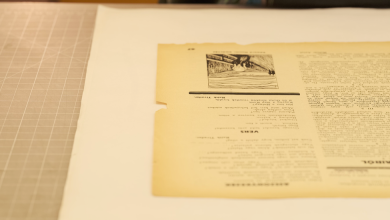Brian Cox Takes Stock of His Eventful Life on Stage and Screen

I’m such a fan of the HBO series “Succession,” about a morally depraved, megarich media family, that I hum its theme song in the shower and have taken to wearing commanding pantsuits. So when I picked up “Putting the Rabbit in the Hat,” the new memoir by Brian Cox, who plays the family’s tyrannical patriarch, Logan Roy, I was desperate for tidbits to tide me over during the long wait for Season 4.
Well, there aren’t many. Cox writes gruffly of a newcomer director on the show giving Kieran Culkin, who plays his youngest son and is an ace at mixing up the script, notes to “slow down.” “Now, this is an actor who’s calibrated the patterns of his character’s delivery over the course of two previous seasons,” the author thunders, or so I imagine (as Roy, he’s a big thunderer). “He’s not going to suddenly slow down just because you’ve given him a note.”
Cox confides furthermore that he doesn’t really relate to the intense, Method-like “process” that Jeremy Strong uses to get into the character of Kendall, Logan’s middle son. Fans already knew about Strong’s tactics from a profile of him in The New Yorker that was chewed over for weeks after it was published in December. Some perceived condescension in the article toward Strong’s working-class background, including an anonymous Yale classmate having marveled at his “careerist drive.”
The heated discussion was fascinating and perplexing. When did acting become so bougie and aspirational? Wasn’t a working-class background once a key element of the Hollywood success narrative — getting yanked out, discovered and made over by the savior figure of agent or studio executive? Think Cary Grant (born Archibald Leach, son of a tailor’s presser), Lana Turner (miner’s daughter), Ava Gardner (child of sharecroppers) and all those other glamour figures of yesteryear.
A humble background didn’t hinder Cox, who has gone from leading man of the British stage to one of America’s most prolific and consistent character actors — what is sometimes called a “jobbing actor,” though he now has the clout to negotiate a chauffeur, nice hotels and a double-banger trailer. Nobody rescued Cox, the consummate utility player. “I knew that simply wasn’t my ballpark,” he shrugs, on the subject of Hollywood stardom. “Besides, I’m too short.” He’s written two previous memoirs, one that tracks him to Moscow to direct “The Crucible” and another about the challenges of “King Lear.” Taking stock at 75, he’s not so much a lion in winter (indeed, he was fired as the voice of Aslan in the Narnia movies) as a seasoned workhorse finally able to enjoy a victory gallop.
Cox writes eloquently about his origins in Dundee, Scotland, as the youngest of five children who occasionally had to beg for batter bits from the local chip shop. His parents met at a dance hall; his mother had been a spinner at jute mills and suffered multiple miscarriages and mental illness; his father, a shopkeeper and socialist, died when Brian was 8. Getting plunked in front of the telly rather than taken to the funeral was formative. So were later escapes to the movies, particularly ones like “Saturday Night and Sunday Morning” (1960), starring Albert Finney: “a film that wasn’t all about the lives of posh folk in drawing rooms, or struggling nobly in far-off places, or having faintly amusing high jinks on hospital wards,” Cox writes. “It was all about working-class people — people like us.” A kind teacher told him about a gofer gig at the local repertory theater and boom, he was home.
Cox went on to attend the London Academy of Music and Dramatic Art and perform in esteemed halls like the Royal Court, learning the classics but also grooving nicely with the rise of the angry young man and kitchen-sink realism led by the playwright John Osborne, with whom he became friends. Before very long he was working with his gods, including Finney.
At a time when theater, the fabulous invalid, is straitjacketed by the pandemic, it’s heartening and a little wistful-making to have it recalled in all its messy midcentury glory. Cox fluffed a flustered Lynn Redgrave’s wig; got felt up by Princess Margaret backstage; narrowly escaped dying in a plane crash on his way to audition for Laurence Olivier. Years later, as Lear in a wheelchair, he “frisbeed” his metal crown into the first row at the National Theater, injuring an audience member. He once compromised his testicles during a naked yoga scene. In the leaner years, he booked bikini waxes and cohabited with an army of cockroaches in a sublet apartment. There was drunkenness aplenty; one actor playing the priest in “Hamlet” got so soused he tumbled into Ophelia’s grave.
Cox, who prefers cannabis to drink, can ramble on a bit. If times ever get lean again, it’s easy to imagine him doing bedtime stories for a sleep app. He salts all the idolatry with disdain. On Kevin Spacey: “A great talent, but a stupid, stupid man.” On Steven Seagal: “As ludicrous in real life as he appears onscreen.” On Quentin Tarantino: “I find his work meretricious. It’s all surface.” (Though he’d take a part if offered.) He’s softer on Woody Allen, owning up to himself dating an 18-year-old when he was in his 40s. “It seems that everybody in this book is either dead or canceled,” he notes with some rue. He’s preoccupied with making a “good death,” cataloging friends’ ends with an almost clinical relish (cancer, emphysema, suicide, a heart attack so massive it threw the victim “clean across the pebbles”).
Like many actors, Cox treads more nimbly on the boards than in his personal life. He admits he wasn’t fully present for family tragedies, like his first wife’s stillborn twins and their daughter’s anorexia. “And that’s my flaw,” he declares. “It’s this propensity for absence, this need to disappear.” He loves the part of Logan partly because, when not thundering, he’s “reined in and bottled up.” But on the page, at least, he is present, lively and pouring forth, though the hints of his distinctive burr may send you heading for the audiobook instead.




